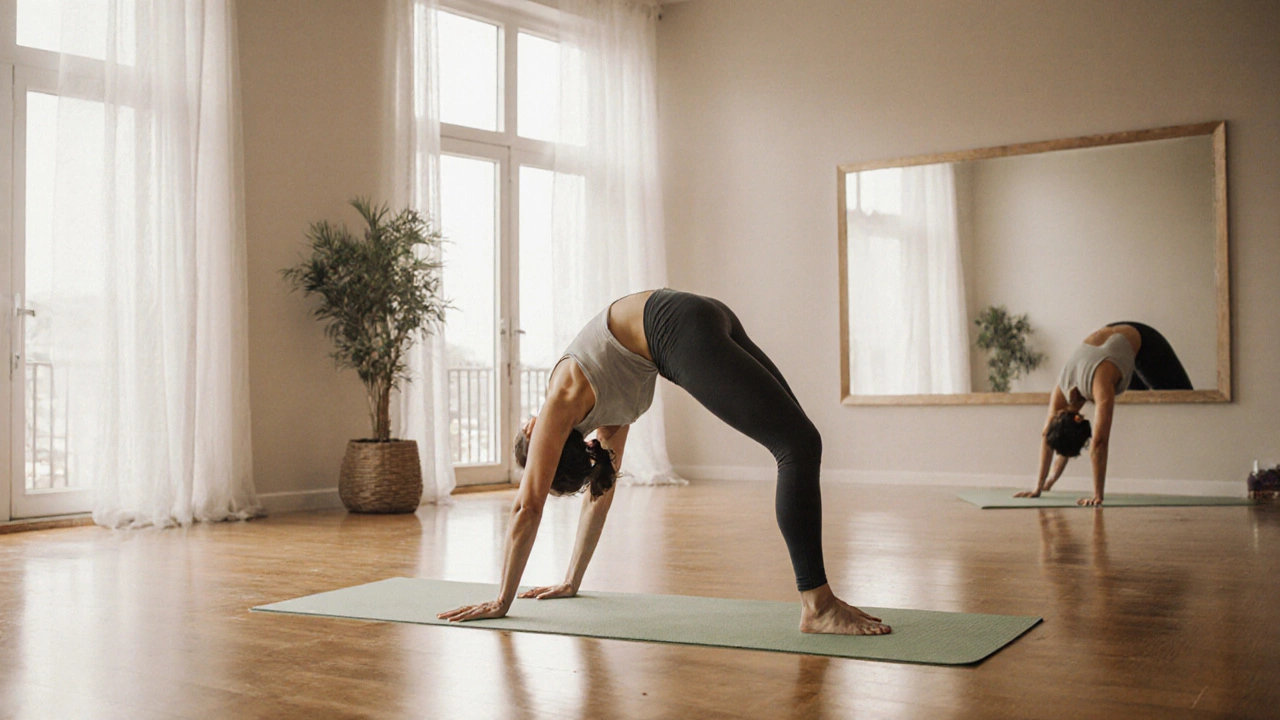Yoga Physical Changes: What Your Body Really Gains
When you hear Yoga physical changes, the measurable shifts in flexibility, strength, posture and body composition that happen from regular yoga practice. Also known as yoga body transformation, it offers a holistic upgrade to how you move, feel and look, the conversation often drifts toward the specific benefits you can see on a weekly or monthly basis. One of the first things most people notice is Flexibility, the ability of muscles and joints to move through a full range of motion. Flexibility improves not just in the hips and hamstrings, but also in the shoulders and spine, making everyday tasks feel easier. Strength gains come from holding poses that engage multiple muscle groups at once, especially the core, legs and upper body. This isn’t bulk‑building weightlifting; it’s functional strength that supports balance and injury prevention. Posture also gets a makeover, because drawing the spine into alignment while you breathe creates a habit of standing taller even off the mat. Finally, many practitioners report Weight loss or body‑composition changes as a side effect of higher metabolism, better stress management and more mindful eating. All these entities intertwine: better flexibility makes stronger poses possible, stronger muscles support better posture, and a healthier posture can aid digestion and calorie burn, creating a positive feedback loop.Yoga physical changes are therefore more than a buzzword—they’re a measurable set of outcomes you can track over weeks.
Key Body Benefits to Expect
Understanding the ripple effect of each change helps you set realistic goals. For flexibility, aim for a tangible metric like touching your toes or achieving a deeper lunge; most people notice improvement within 4‑6 weeks of consistent practice. Strength can be gauged by how long you hold a plank or how easily you transition between balancing poses; a 20‑30% increase in hold time is common after a month. When it comes to posture, notice the reduction in neck or lower‑back aches—these aches often fade as the ribcage opens and the pelvic tilt corrects itself. Weight loss isn’t guaranteed for every practitioner, but tracking waist circumference or body‑fat percentage often shows modest reductions when yoga is paired with mindful nutrition. These benchmarks connect directly to the articles in our collection: we’ve got a deep dive on the “Yoga results timeline” that breaks down precise weeks for each milestone, a guide on “Gentlest yoga” for beginners who want a low‑impact start, and a piece on “Is 20 minutes of yoga enough?” that shows how short, consistent sessions still move the needle on these physical changes. By linking these concrete measures to the underlying concepts of flexibility, strength, posture and weight management, you get a full picture of how yoga reshapes your body.
Below you’ll find a curated set of posts that walk you through each of these facets step‑by‑step. Whether you’re curious about how fast you’ll notice results, which style of yoga best fits your back health, or how to combine yoga with HIIT for extra calorie burn, the articles here cover the whole spectrum. Dive in, pick the topic that matches your current need, and start measuring your own yoga physical changes with confidence.

How Quickly Can Yoga Transform Your Body?
Maeve Larkspur Oct 15 0Discover how quickly yoga can reshape your body, the timeline for flexibility, strength, and composition changes, and a proven 4‑week plan to accelerate results.
More Detail